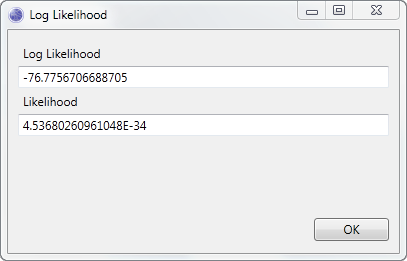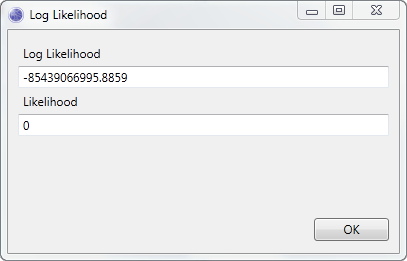When evidence is entered in a Bayesian network or Dynamic Bayesian network, the Probability (likelihood) of that evidence, denoted P(e) can be calculated.
The Probability of evidence P(e) indicates how likely it is that the network could have generated that data. The lower the value, the less likely.

The Log Likelihood Log(P(e)) is also reported, as the P(e) can often report zero, due to underflow caused by the repeated multiplication of small probability values, using floating point arithmetic. |

Bayes Server uses sophisticated algorithms to calculate the likelihood and log-likelihood. The calculations require that all variables in the Bayesian network that do not have evidence are marginalized out. |
Log Likelihood values are often used to detect anomalous data, as demonstrated in Exercise - anomaly detection. |